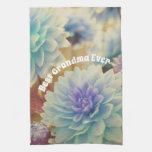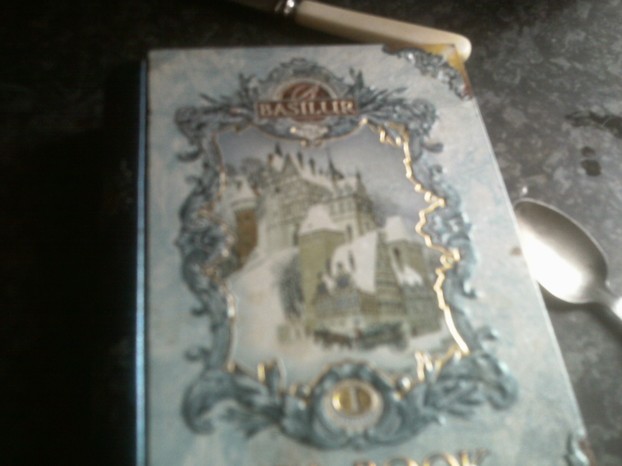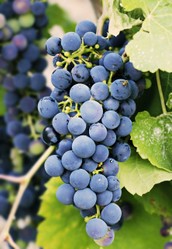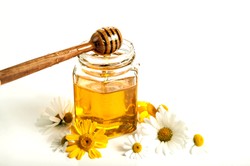The simplest kind of tea is white tea, which the Chinese call yellow tea, though despite its simplicity it is a gourmet taste, full of flavour. It is made from the leaves or buds of Camelia, but they are barely processed, just allowed to dry out naturally in the sun. White tea is not the tea most commonly drunk, for the barely processed leaves need to be used quickly before they lose flavour.
Green tea, which I drunk this morning, is processed a little more than white tea is, and so it stores longer. I bought myself a small box of tea bags to drink because of its health benefits. It is full of anti-oxidants known as flavenoids that are claimed to benefit health by attacking dangerous free radicals. Like white tea it does not keep for a long time, so it must be drunk within a year of being bought. Like white tea it is often taken without milk, which is the way in which tea is taken in continental Europe. British are lovers of tea taken with milk, but a word to be heeded here! Unlike coffee tea does not taste good with cream. I like mine with skimmed or semi-skimmed milk. Another tip for you is whatever tea you take, ensure that the water is boiling when you pour it on the leaves, as this gives you the best flavour.
[Here the writer pauses to brew a mug of green tea.Well, he is British, isn't he!]
A traditional Chinese tea that lies between green and black tea is oolong. While green tea has undergone oxidation in processing oolong has undergone semi-oxidation.The leaves are not shredded, but can be rolled into small balls or rolls. Like white tea it was not meant to be stored for long, so it is a gourmet taste for Europeans and Americans. There is a large range of oolongs depending on the area from which they come.
The commonest tea is black tea, which stores well because it is well-dried. It will keep for years. Most of the common blends sold in the UK and Europe are black teas. This tea is commonly taken with milk, though some take it black [milkless.] Tastes vary, some like it strong, and to get the tea this way leave it to brew in the pot or cup for a couple of minutes. Some people press the teabag with a spoon to release flavour. However, tea kept too long "stews" in the pot and is not pleasant. Some drinkers like tea sweet, and two spoonfuls of sugar per mug is about all that you need, though I prefer mine unsweetened.
A point to be noted, redbush, known as rooibos, is a tea, but it is not char. It is a caffeine free leaf from the South African shrub Aspalanthus linearis. It is a drink popular with people concerned about their caffeine intake, though you can also get decaffeinated tea.







 The North Wales Pilgrim Pathon 03/30/2024
The North Wales Pilgrim Pathon 03/30/2024
 Rewilding the Isle of the Thundergodon 02/17/2024
Rewilding the Isle of the Thundergodon 02/17/2024
 Adrienne von Speyr a life on the edge of heavenon 01/24/2024
Adrienne von Speyr a life on the edge of heavenon 01/24/2024
 The Granite Kingdom: a Cornish Journeyon 12/29/2023
The Granite Kingdom: a Cornish Journeyon 12/29/2023


Comments
They absorb water and release it slowly. This prevents sudden floods.
Thank you!
Do peat bogs prevent floods because of their contents, location and textures? For example, might their contents be particularly water-absorbent and their locations be in flood-prone areas and their textures be particularly heavy?
British peatbbogs are under severe pressure and are being preserved for environmental reasons, such as flood prevention.?
Thank you!
Some Unitedstatesians associate peat with resources whose use carefully must be monitored even as they extol their efficacy.
Might that outright or potential precariousness be a reason for it "being phased out"?
All tea leaves work equally well.m to acidity the soil I would addn sulfur. Peat can do it, but it is being phased out.
Thank you!
Does it matter the type of tea leaves or does black or green or white, caffeinated or decafferinated work equally well?
(WWFD: What would Frank do to acidify soil?)
Razors are mere folklore without any evidence. Tea leaves work, as they are van acidic substance.
Thank you!
Kate Mosse authored The Mystery of the Acid Soil for Agatha Christie Limited's 2022-release, Agatha Christie: Twelve New Mysteries.
Mosse has Jane Marple fretting about her jasmine bush running wild while she is in Sussex for three weeks with long-time friend Emmeline Strickert.
Fishbourne residents seem to try to acidify soil by putting used razor blades under acid-loving plants. Marple, like St. Mary Mead residents, tells her maid to use tea leaves instead.
Would either method still be used by east (Atlantic) ponders?
Chai is associated with black tea, though the English term char denotes white and black, as well as green tea.
We don't take much spiced tea in our family, though in my household mint tea is drunk, and I am a fan of ginger. We don't work in quantities, but measure in cupsful and mugsful.
Revisiting your wizzley brings to a mind a current dilemma about tea-drinking.
I'm considering a homemade version of the Starbucks chai latte with a shot of espresso. Starbucks employs Tazo chai concentrate, which most internet sources call black tea but some say green, with cinnamon, cloves and unspecified "other" spices.
Is chai more associated with black tea than with green, or vice versa? Or is it individual preference? Or is it something else?
What spices would east-ponders generally, and you and your family and Veronica and hers specifically, put in milk boiled with chai and charged-up with a shot of espresso?
Also, what liquid measurement -- west-pond ounces = east-pond milliliters? -- would you consider a shot-full?